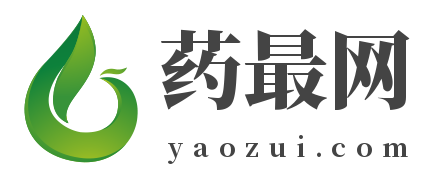 欢迎分享,转载有版权, 快快登录 lingmed.net/reports 获取更多项目信息吧!
欢迎分享,转载有版权, 快快登录 lingmed.net/reports 获取更多项目信息吧!
PART I EvaluatePharma精选报告推荐
灵麦医药的公司使命之一是“向中国市场引进创新医疗产品来提高中国患者的生活质量,拯救患者的生命”。为实现这个使命,灵麦医药致力于支持中国区大型医药企业引进创新医疗产品。本周,灵麦医药独家推荐EvaluatePharma的精选报告- 孤儿药市场分析。
报告分析亮点:
2022年全球孤儿药市场将达2090亿美元, 占全球处方药销售额的21.4%
全球孤儿药复合增长率为11.1%(2017-2022),将近是整体处方药市场增长的两倍
孤儿药的病人人均消费额是非孤儿药的5倍。
Celgene的Revlimid(来那度胺)以USD 135亿的销售额名列所有孤儿药药品销量第一
Celgene也将会以USD 169亿的销售额位列孤儿药销售榜首
Kite Pharma的Anti-CD19 CAR-T细胞疗法Axicabtagene Ciloleucel将会以USD 79亿的NVP值成为最有价值的孤儿药R&D项目
EvaluatePharma全新推出流行病学板块可以帮您寻找合适的罕见病市场领域,制定更好的战略方针

孤儿药市场综述
“孤儿药”又称为罕见药,用于预防、治疗、诊断罕见病的药品,由于罕见病患病人群少、市场需求少、研发成本高,很少有制药企业关注其治疗药物的研发,因此这些药被形象地称为“孤儿药”。针对初级保健的拳头产品的时代已经过去了。 由于市场饱和度,价格压力和更严格的报销标准等竞争等因素已经迫使制药企业重新考虑其业务模式,开始重视孤儿药市场。
根据EvaluatePharma的权威预测,未来5年,全球处方药市场将以6.5%的复合增长率稳步增长,2022年可达1.06万亿美元。其中32%的销售额增长将来自孤儿药产品。孤儿药的销售在2016-2022年将快速翻倍,将在2022年达到销售顶峰2090亿美金,占全球处方药销售额的21.4%(不含仿制药)。全球孤儿药复合增长率为11.1%(2017-2022),将近是整体处方药市场增长的两倍。

Figure 1 Orphan Drugs: US Prescription Sales and Approvals

Figure 2 Worldwide Orphan & Prescription Drug Sales (2008-2022)
孤儿药市场的快速发展一是归功于审批部门的“绿色通道”,缩短了药物开发时间和成本。如Figure 1所示,仅在美国,被批准的孤儿药物数量从2001年的5个增加到2015年的33个。发展转向罕见疾病的另一个因素是临床研究和诊断的重大进展,允许制药企业更准确地识别和解决疾病。 EURORDIS指出,大约80%的罕见疾病是遗传病,因此能够识别这些缺陷一直是开发新疗法的关键因素。 而孤儿药的高价格高利润更是促进这一市场蓬勃发展的重要动力。如Figure 3所示,2016年,孤儿药患者人均消费USD 140,443,是非孤儿药患者人均USD 27,756的5倍之多。所以纵使面向较少使用人群,孤儿药市场潜力与容量依然不可小觑。



Figure 3 Comparison for Orphan&Non-orphan drugs cost per patient
欲知更多项目分析报告及行业洞见,请登录www.lingmed.net/reports下载或联系我们info@lingmed.net
EvaluatePharma Orphan Drug Report 2017
Analysis Highlight:
Worldwide orphan drug sales forecast to total $209bn
(CAGR 2017 to 2022:+11.1%); approximately double overall prescription market growth
Orphan drugs set to be 21.4% of worldwide prescription sales by 2022 (excluding generics)
Median cost per patient differential 5.5 times higher for orphan drugs compared to non-orphan
Celgene set to climb to number one position in orphan drug sales to 2022
Revlimid (lenalidomide) No.1 orphan drug in 2022
Axicabtagene Ciloleucel (Kite Pharma) is most valuable R&D orphan drug

Worldwide Orphan Drug Market
Gone is the age of the big blockbuster drug targeting large primary care populations. A combination of drivers including market saturation, pricing pressures and stricter reimbursement criteria in addition to generic/biosimilar competition has forced Pharma to rethink its business model.
The riposte has been to shift focus to niche patient populations within diseases or to orphan diseases themselves. Such behavioural evolution is both opportunistic and unavoidable: opportunistic due to the sheer number of rare diseases and high clinical unmet need; unavoidable because of the limited amount of ‘low-hanging fruit’ in drug development and urgent need to bolster R&D portfolios.
This is an interesting perspective given the established positioning of orphan drugs and drugs targeting niche patient populations: that is, that they can command high prices to offset the smaller numbers of patients taking the drugs and high R&D expenditure associated with novel therapeutics. Data from Evaluate show that the worldwide orphan drug forecast is expected to double between 2016 and 2022 to $209bn. This is indicative of a large pipeline of products, some of which are benefiting from expedited approval designations due to the high clinical unmet need of the target patient populations. As a result, the number of orphan-designated drugs being approved is increasing – in the US alone, the number of unique orphan drugs approved increased from 5 in 2001, to 33 in 2015 (figure 1).

Figure 1 Orphan Drugs: US Prescription Sales and Approvals

Figure 2 Worldwide Orphan & Prescription Drug Sales (2008-2022)
Another factor behind the development shift to rare diseases has been major advances in clinical research and diagnostics allowing Pharma to both identify and tackle disease with greater precision. EURORDIS states that around 80% of rare diseases are of genetic origin and so being able to identify these defects has been a key factor in developing new therapeutics, particularly around cancers where there is larger genetic diversity and patient segmentation. This improved understanding of disease mechanisms and therapeutic technologies has helped to justify increasing R&D expenditure apparent across the industry with Evaluate forecasting worldwide R&D spend to grow at a rate of 2.8% between 2015 and 2022 compared with compounded annual growth rate (CAGR) of 1.7% between 2008 and 2015.
EvaluatePharma® estimates that the average cost per patient per year in 2016 for an orphan drug was $140,443 versus $27,756 for a non-orphan drug. The average drug price has increased year on year for both orphan and non-orphan drugs since 2012. The median price differential between an orphan and non-orphan drug in 2016 was 5.5 compared to 9.8 in 2012. The median price of orphan drugs and non-orphan drugs has increased by a factor of 1.3 and 2.3 since 2012 respectively.



Figure 3 Comparison for Orphan&Non-orphan drugs cost per patient
If you are interested in this project or need more detailed non-confidential slides, please contact us info@lingmed.net
Or else, please visit www.lingmed.net/reports for more available assets.
灵麦医药是以下两家情报数据库在中国的独家合作伙伴:
Biotechgate/博谷 - 全球创新药和器械产品收购和引进数据库
EvaluatePharma/预估医药 - 全球医药研发、销售、市场预估等竞争情报数据库
想要下载完整报告?
请登录 www.lingmed.net/reports
或点击下方“阅读原文”马上下载


